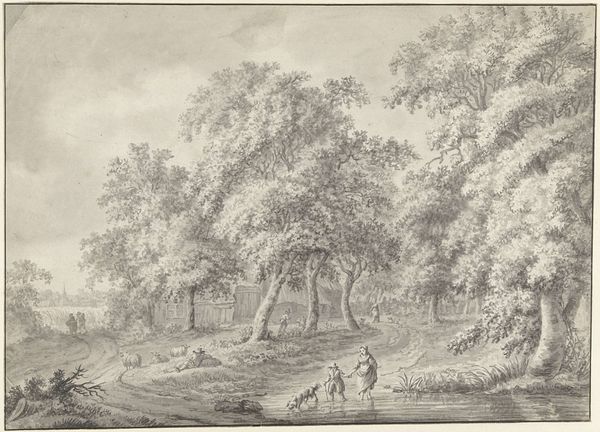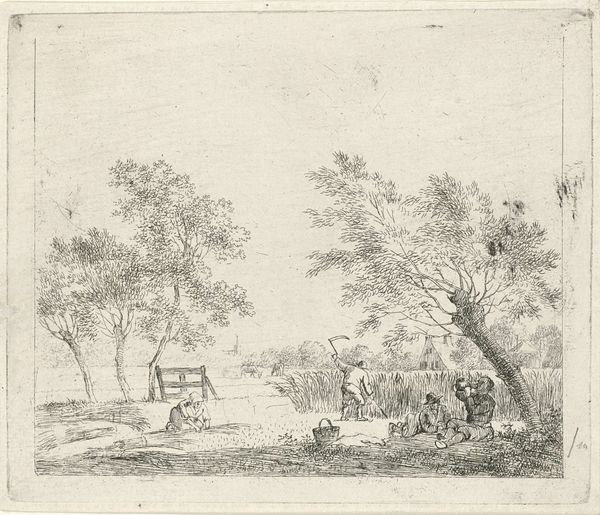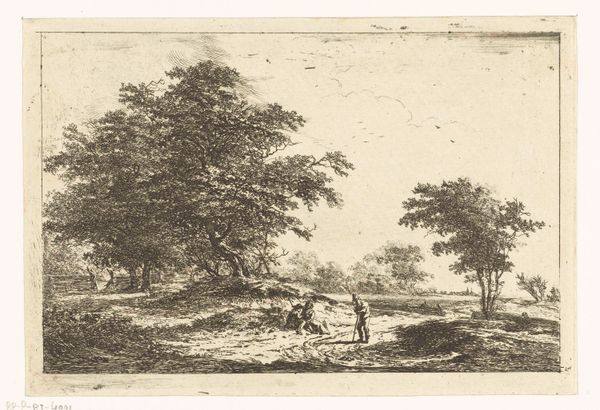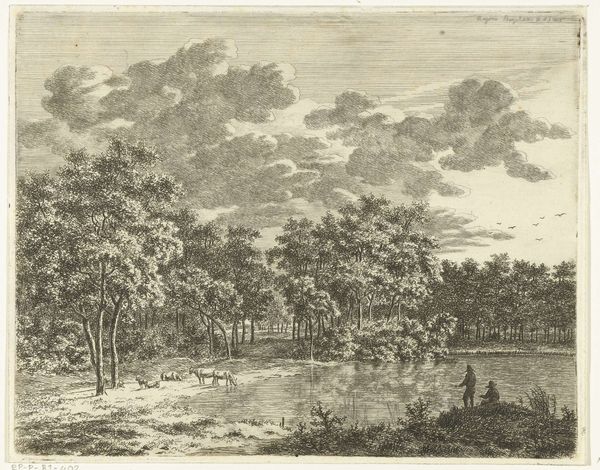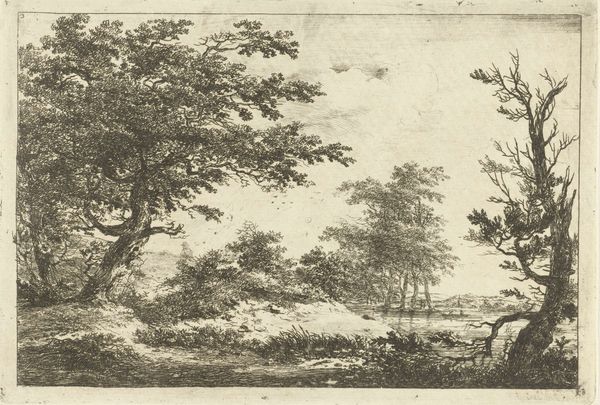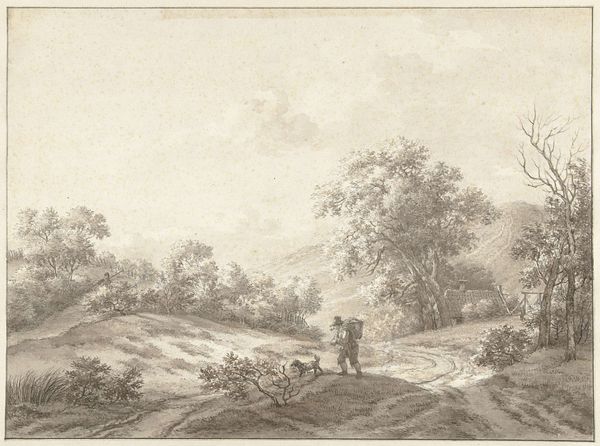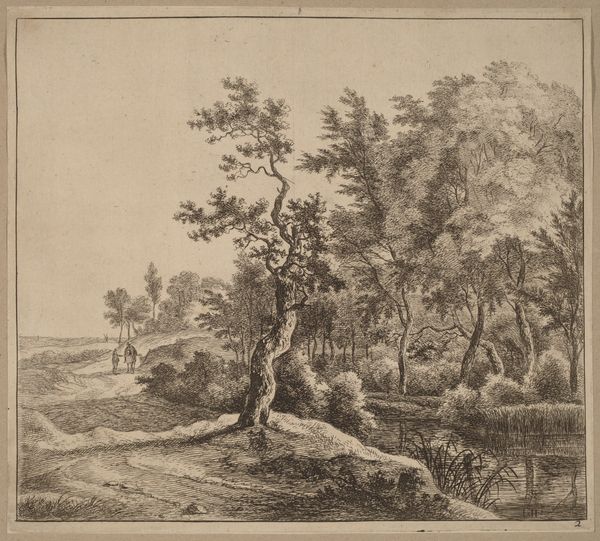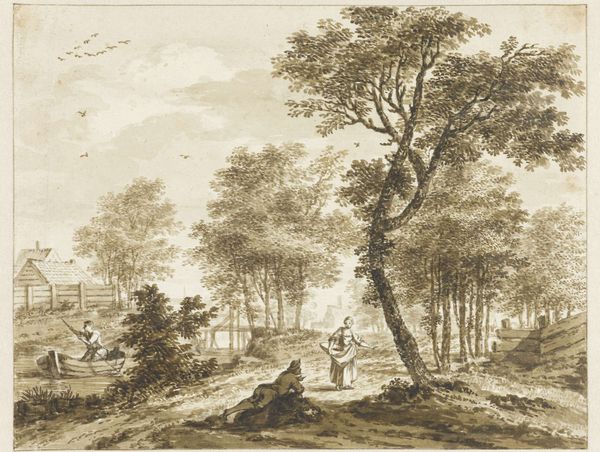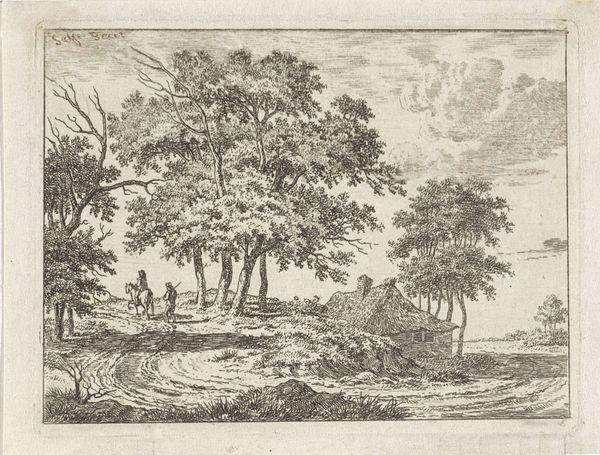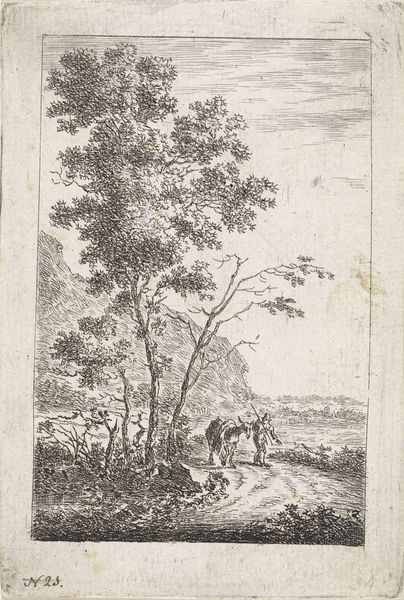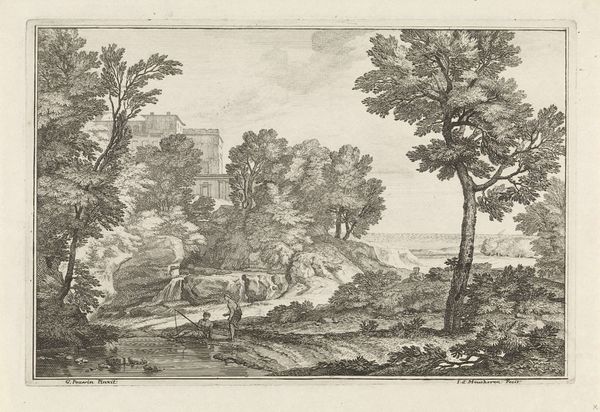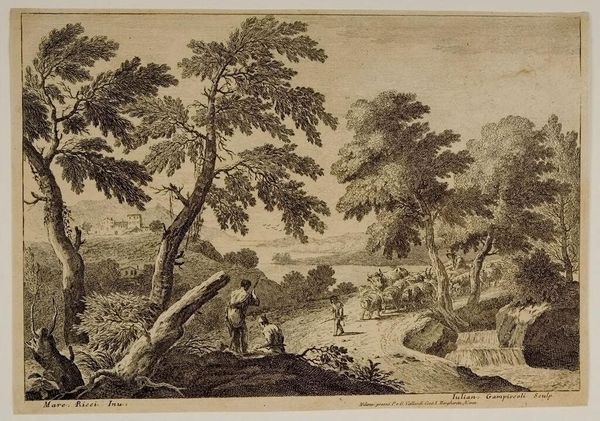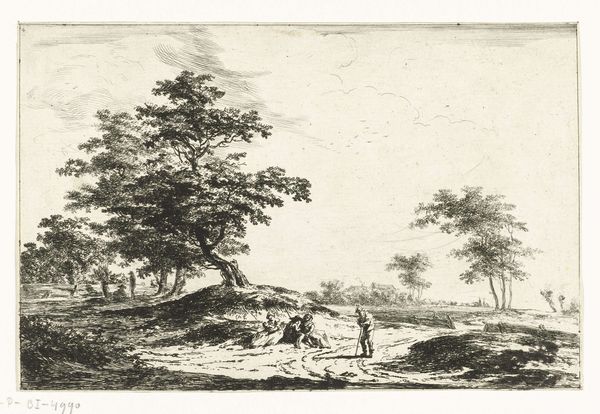
Dimensions: height 144 mm, width 171 mm
Copyright: Rijks Museum: Open Domain
Curator: Johannes Janson’s "Landscape with Grain Harvest," created in 1783, is an etching that offers a snapshot of rural life. Editor: Immediately, the intricate details in the foliage and the expansive sky suggest a carefully constructed pictorial space. The use of light and shadow definitely pulls you in. Curator: Indeed. Janson, though somewhat lesser known today, was working within a broader artistic movement of landscape and genre painting which was tied to developing ideas of nationhood and agrarian economics. The representation of rural life became particularly important as a reflection of cultural values. Editor: And technically, consider how the artist's choice of etching impacts the overall texture; you notice these soft, diffused lines particularly in the trees. What feeling does it evoke, the textural element alongside its pictorial space? Curator: The etched lines, combined with the scene’s idyllic imagery, promote an idealized version of the rural labor force. These images of simple virtues, of rural life, were commonly commissioned by the elite class. We should question whether the work truly depicts everyday rural life, or something more closely aligned to propaganda or commercial art. Editor: Perhaps. But if we disregard for a moment the painting's historical narrative and just look at it as an example of etching, its composition makes you feel present in this golden wheat field; the artist truly has constructed this pictorial space, even without vibrant colours. Curator: These "genre scenes" provided urban audiences with an accessible image of the working class that both distanced them and fostered, however artificially, a sense of connection. The art object could serve as a conversation starter, even for our contemporaries. Editor: Certainly something to consider when looking at a seemingly simple, picturesque image. What begins as surface-level viewing reveals structural underpinnings and historical implications that transform your perspective of the pastoral.
Comments
No comments
Be the first to comment and join the conversation on the ultimate creative platform.
